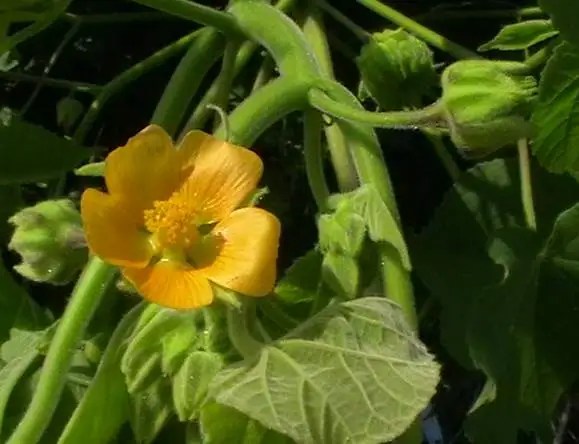Our heart-shaped mystery seeds from last week were from a plant called velvet leaf or Indian mallow, Abutilon theophrasti.
Perhaps if I had shown you this mature seed head, it might have been easier to identify.
Velvet leaf gets its common name from the fuzzy appearance of its leaves.
The short-lived flowers are yellow-orange in color (public domain photograph)
Originally from China, velvet leaf is considered to be an invasive weed in agricultural fields in North America.
Ours was a present from the birds, as it showed up where we had previously scattered birdseed. Fortunately, it does not seem to thrive in our heat.
Have you seen velvet leaf before? It has other common names. What do you call it?
_______________________________________
Mystery Seed of the Week is taking a short break. Next Tuesday I’m going to have some children’s books about seeds.












